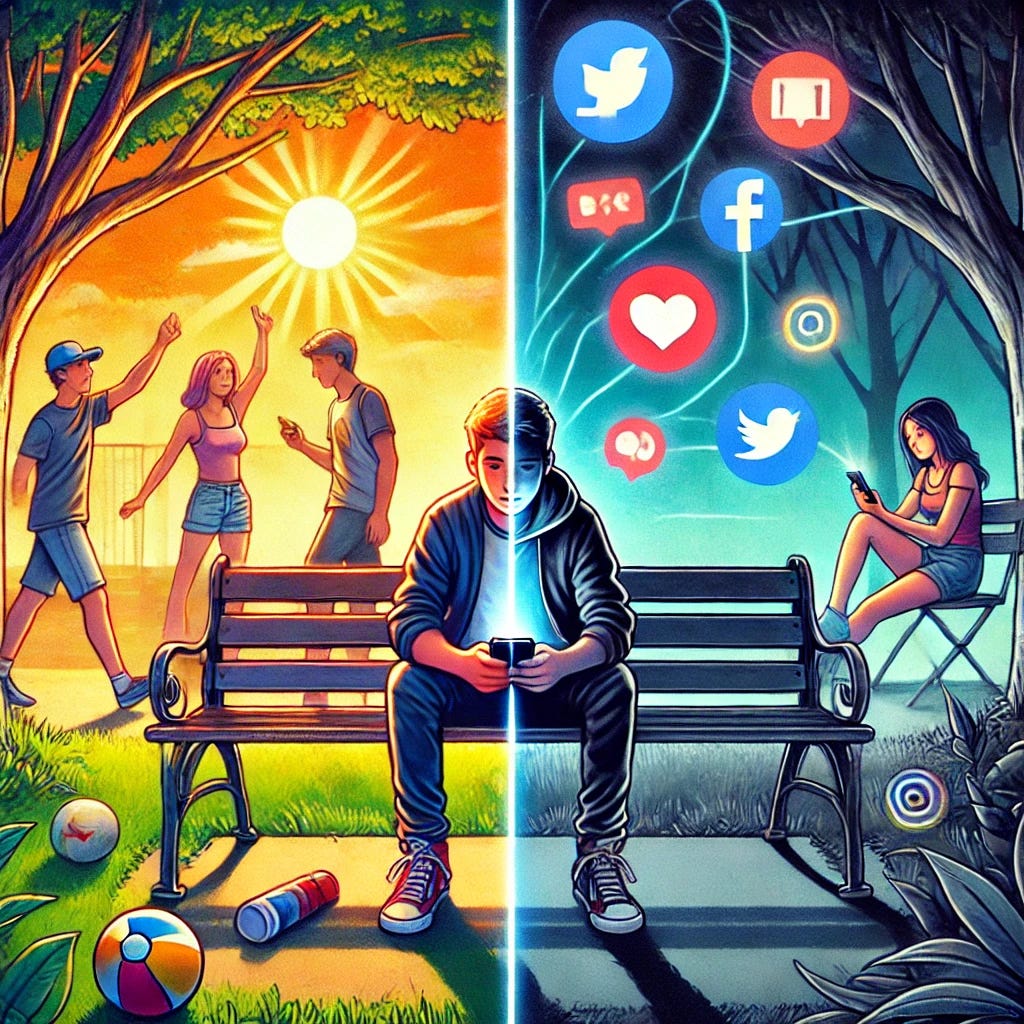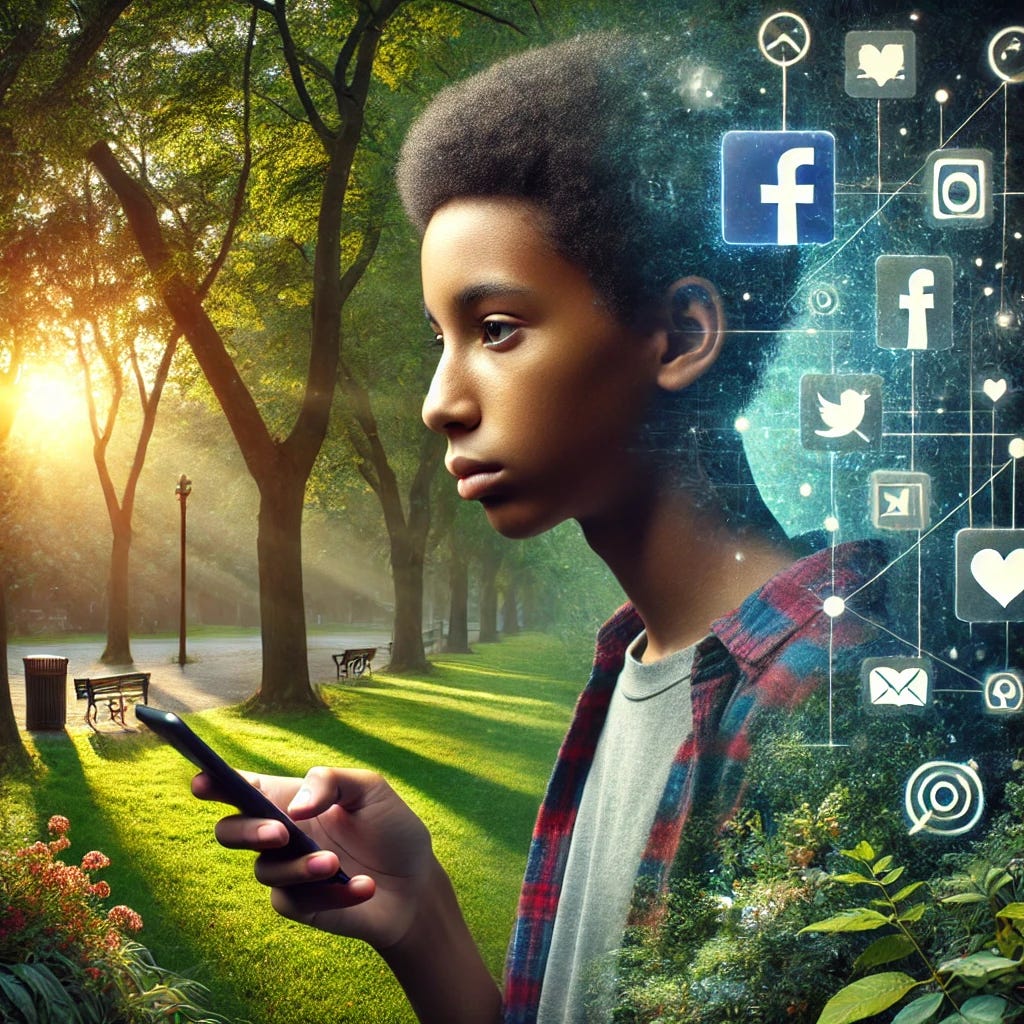I talk a lot about mental health. From “how do we best invest our resources to make an impact?” to “what are the policies most promising for advancing mental health?” But lately, the one topic I get asked about more than anything else is the role of social media.
Someone recently asked me about social media’s role in my own life growing up. This question, I’ll admit, immediately shows my age—I grew up with AOL’s Instant Messenger (AIM). If you are not familiar with this gem of a tool, it was basically a chat window that allowed you to chat with friends. Sounds so boring, right? Except 20 years ago it was revolutionary. I remember the thrill of talking to people across the world through this platform. It connected me to an entirely new world of possibilities!
When the social media most of us think of, e.g. Facebook, twitter, finally hit the scene, I was an early evangelist. I gave talks, wrote articles, and shared all I could about the promise of what social media could do for health care. The opportunity to connect, to share, to engage, it just felt like such a powerful tool that could be used for good. Organizations everywhere wanted to know how to use it, what it meant for their professions, and the ways it could foster connection. I felt that part of my job was to show them how to do that responsibly and effectively.
Looking back, I wish I’d seen what was coming. What began as a tool for sharing and connection transformed into something far more complicated—shifting from sharing to obsession, often at the expense of our mental health and well-being.
So where am I now? Well, let me try and summarize it up a bit below.
Understanding the Impact of Social Media on Mental Health
Over the past few years, researchers and advocates have painted a clearer picture of social media’s effects on mental health, particularly among young people. The findings are a mix of stark warnings and actionable insights.
Jonathan Haidt and Jean Twenge, two of the leading voices on the subject, have identified a troubling link between high levels of online activity and declines in mental health and well-being. They’ve offered evidence that’s shown how today’s teens—often referred to as the "iGen"—are the first generation to grow up with social media from a young age. This makes them uniquely vulnerable to issues like anxiety and depression, fueled in part by constant online comparisons and isolation. Meanwhile, vital activities like outdoor play, in-person socialization, and physical movement—essential for emotional development—are being replaced by hours spent online. Their work is compelling and worth taking a look at.
Adding to these concerns, Sapien Labs has revealed how the early introduction of smartphones compounds the problem. Their data shows that the younger children are when they receive their first phone, the more likely they are to experience mental health struggles like loneliness, anxiety, and low self-esteem. The adolescent brain is particularly sensitive to the dynamics of social media, where constant connection can feel like a double-edged sword: fostering interaction but also amplifying pressure and dependency.
Even the U.S. Surgeon General has weighed in, issuing an advisory earlier this year about the dangers of excessive social media use among young people. He pointed out that platforms are often designed to capture attention at any cost—sometimes to the detriment of users' mental health. The Surgeon General’s call for clear boundaries and ethical platform design is a reminder that the responsibility to protect mental health doesn’t lie solely with families—it’s a systemic issue requiring action from tech companies, schools, and policymakers.
Balancing the Benefits and Risks
Not all findings are bleak. Social media’s impact on mental health isn’t uniformly negative—it often depends on how it’s used. Reports from organizations like Hope Lab emphasize that intentional, meaningful use of social media can be a source of connection and support. For teens who may lack offline social networks, platforms can provide a sense of community and belonging.
However, problems arise with excessive or passive use. Scrolling through endless streams of curated content can lead to negative self-comparisons, while using social media as a substitute for face-to-face interactions often correlates with poorer mental health outcomes. The key takeaway? Social media is most beneficial when it complements offline life, rather than replacing it.
To address these challenges, national organizations like the Mental Health Coalition have launched initiatives like the Safe Online Standards (SOS) program. Their goal is to establish industry-wide standards that prioritize safety for young users. Suggestions include embedding mental health resources into platforms, setting time limits, and ensuring content filters are robust and transparent. All wonderful ideas. These measures also highlight the shared responsibility of families, schools, and tech companies in creating healthier digital spaces.
A Call for Balance and Advocacy
So, where do we go from here? Experts agree that the solution lies in striking a healthy balance between online and offline activities. Outdoor play, physical movement, and face-to-face interactions are essential for fostering emotional resilience in young people. At the same time, social media must be approached mindfully—used to foster meaningful connections, not endless consumption.
Policy change will also play a crucial role. Parents can’t tackle this issue alone as hard as we might try. We need stronger safeguards, ethical platform design, and ongoing education to help young users navigate the digital world safely. It’s up to all of us—parents, policymakers, educators, and tech companies alike—to ensure that social media remains a tool for connection rather than a source of harm.
Social media is an incredibly powerful force. I used to preach about its benefits, but like any tool, its impact depends on how we use it. By fostering mindful practices, demanding better from tech companies, and prioritizing offline experiences, we can help ensure that the next generation navigates this digital landscape with their mental health intact.







As most of the major social media brands are under American ownership and leadership, it behooves the U.S. to set better operational policies on online commerce other nations can emulate.
People tend to ruin things when given enough chances to do so.